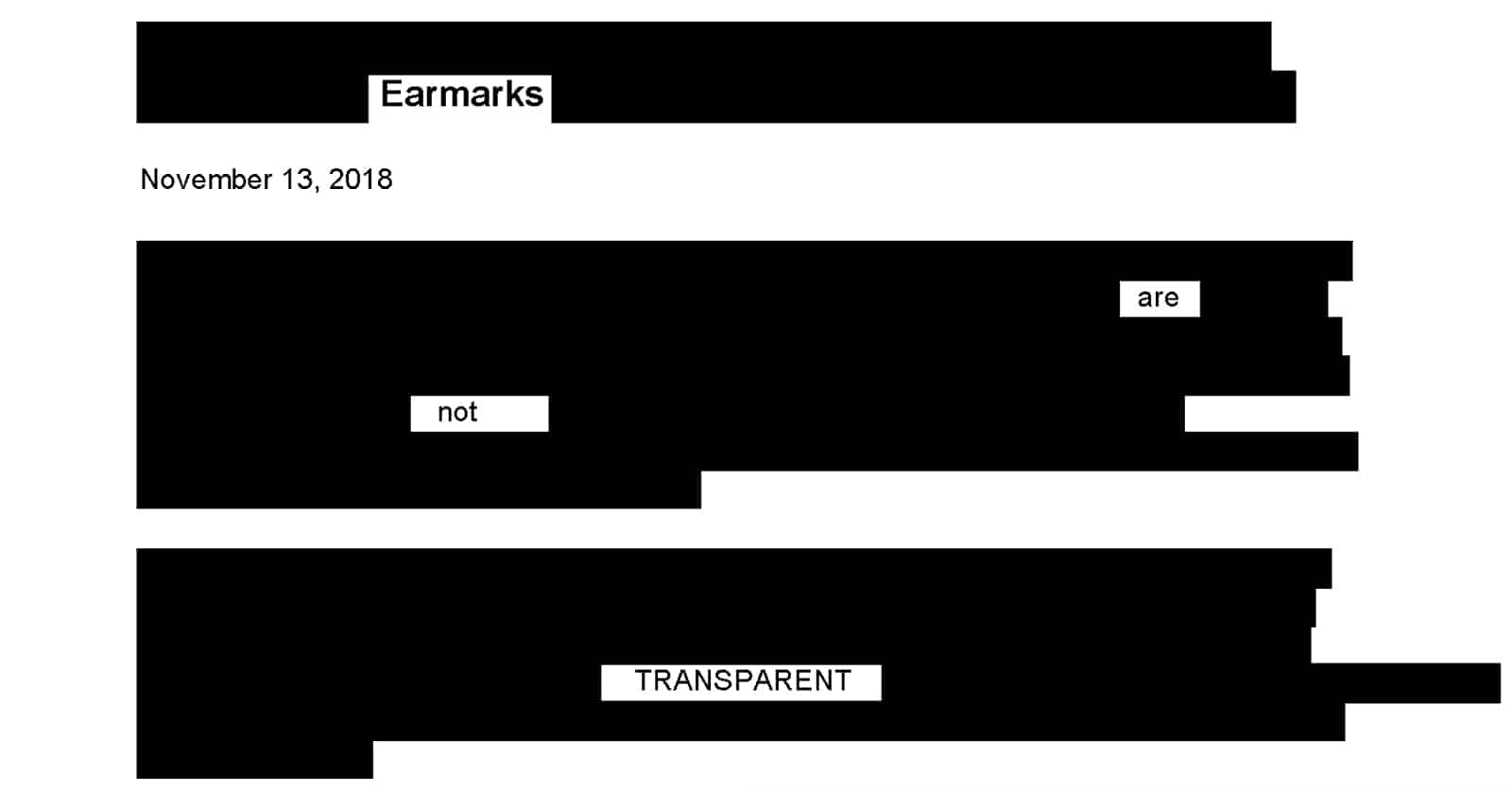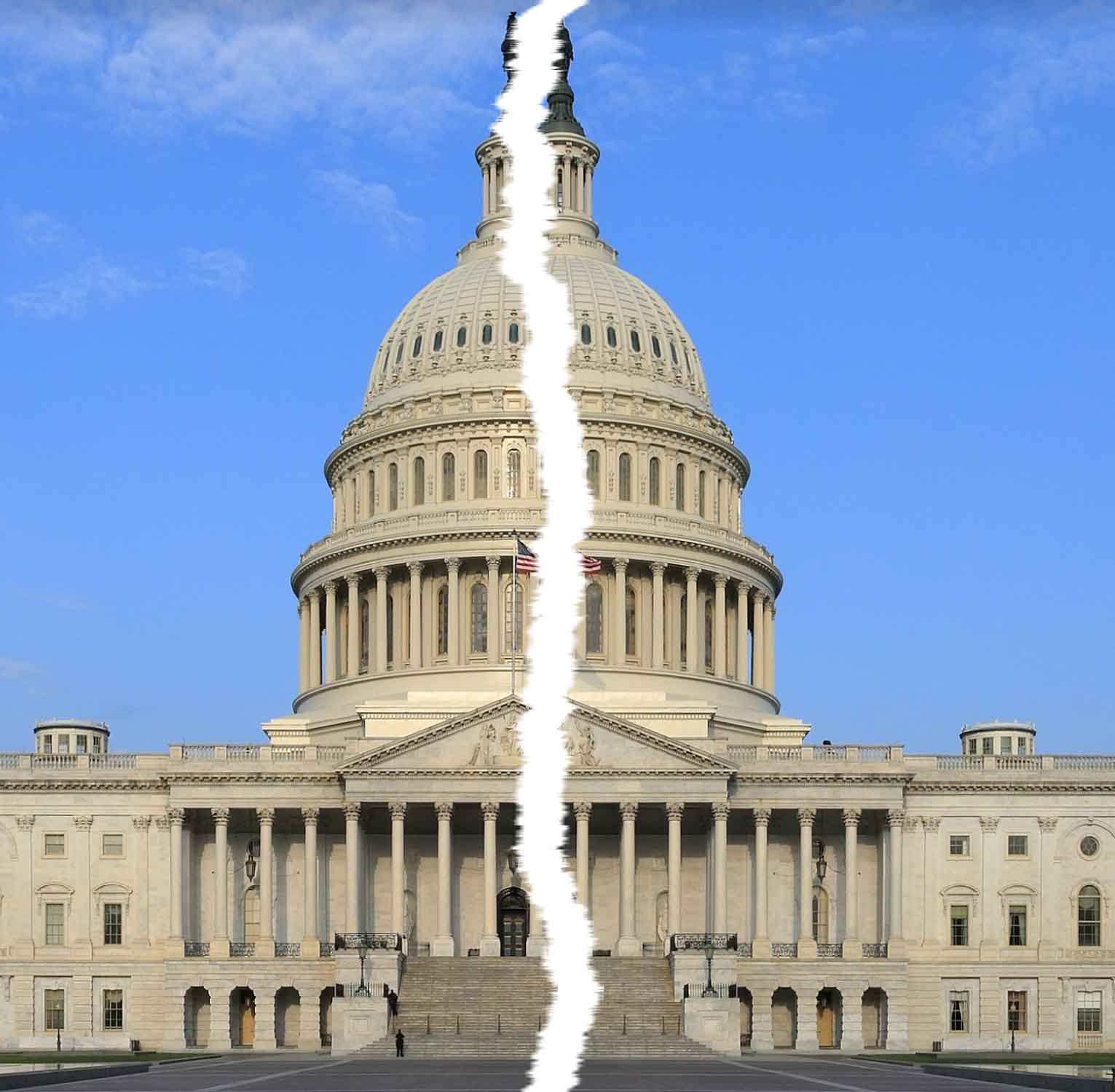Earmarks: Neither Savior, Nor Solution
Earmarks Deep Dive
Lawmakers have toggled back and forth on earmarks, those special interest provisions tucked into spending, authorization or revenue bills. After seeing more than 15,000 earmarks in 2005, Democrats enacted transparency measures to at least identify which lawmaker got what in 2007. In 2011, Republicans established a moratorium on the practice that held (barely) until 2021. At that point Democrats reintroduced earmarks but with certain limits (number of requests in the House, could only go to government or non-profit entities).
We’ve been consistently critical of these inherently opaque, corrupting provisions. They do not and will not help Congress do its job – there is no substitute for compromise and legislative elbow grease to develop better legislation.
Below are quick explanations of how earmarks are not the savior or solution they are depicted. Following that is a TCS testimony before the House Rules Committee in January 2018, and an op-ed on the subject from TCS’ then-President and Executive Vice President, as well as much of the materials that document earmark uses and abuses in years past.
- Why Earmarks Do Not Work
- January 2018 testimony from TCS president Steve Ellis
- December 2020 Letter to the Editor of the New York Times from TCS president Steve Ellis
- November 2014 op-ed from past TCS president Ryan Alexander & now president Steve Ellis
- Earmark-related resources
- All our work and media mentions on the issue
Earmarks Simply Do Not Work
If you’ve followed our work on earmarks there are (hopefully) few surprises, but these points are worth reiterating:
Earmarks are the antithesis of transparency.

They are inherently opaque, make legislation difficult to understand and tedious to implement, and will not help address Congress’ current state of ongoing dysfunction – the potential shutdown is about a budget deal and immigration, things that earmarks don’t change. Government shutdowns and continuing resolutions certainly occurred during the earmark boom years. Besides, the Miscellaneous Tariff Bill (MTB) that used to be chock full of earmarks passed the house last night 402-0.
Earmarks invite corruption.

They were, and will reseed a pay-to-play environment that picks winners and losers, and favors political muscle over project merit. The infamous Bridge to Nowhere, which we named, researched, and stopped, is only one example of what happens when earmarks determine spending.
Earmarks do not help Congress do its job better.

Earmarks are a relatively recent phenomenon. And some of our country’s biggest modern legislative accomplishments – the Civil Rights Act, the Interstate Highway system, the Tax Reform Act of 1986 to name just a few – all passed in times when earmarks were relatively insignificant. Meanwhile, arguably, congressional dysfunction and inaction worsened with the rise of earmarks. And rise they did. TCS reviewed the fiscal year 1970 defense appropriations and found a dozen earmarks. In the fiscal year 1980 bill there were 62. But by fiscal year 2006 defense spending measures had 2,879 earmarks. According to the Congressional Research Service there were roughly 3,000 earmarks in 1996. By 2005 that number exceeded 15,000. In the last year of earmarks, fiscal year 2010, there were more than 9,000 – treble the number from only 15 years prior.
Congress already has a way of determining spending – it’s called appropriations bills. And Congress already knows one major way to break through legislative gridlock – by doing the hard work and writing better bills. As with much of life, there isn’t a substitute for elbow grease, and in TCS vice president Steve Ellis’ words, earmarks – certainly – are not some sort of magic pixie dust that makes legislation go.
Testimony of Steve Ellis, President (Executive Vice President during testimony) of Taxpayers for Common Sense
On the 18th of January 2018, Steve Ellis, President of Taxpayers for Common Sense testified before the U.S. House of Representatives’ Committee on Rules against the renewed embrace of earmarks on the Hill. The entire statement is online and can be found here.
…And Everything Else
There’s a reason we found and shut down the infamous “bridge to nowhere,” a classic case of earmarks if ever there was one.
The issue of earmarks does not look like it will go away. So, if you’re still digging into what bringing back earmarks would mean, here’s a short list items that we worked on in the recent (and not so recent) past and things we’ve said on the subject:
- An oped our president, Ryan Alexander and vice president Steve Ellis co-wrote back in 2014 – it’s sadly evergreen. “The earmark heyday does not coincide with a high water mark of Congressional cooperation. Indeed, the last time Congress passed a budget and all appropriations bills individually on time was 1994 – before the earmark boom. Great legislative accomplishments of the last half century – from the Interstate highway system, the Civil Rights Act, Tax Reform Act of 1986, the Clean Air and Water Acts to name a few – all passed in times when earmarks were relatively insignificant.”
- Our Earmarks Database – for Fiscal Years 2008-2010 when lawmakers had to claim their earmarks, we databased them all to actually analyze the data. (Transparent at the time was a paper chart at the end of the report accompanying the bill. To know the true beneficiary, we had to match a separate request letter to the earmark – except for Senate earmarks, which didn’t even have a public letter.)
- The Bridge To Nowhere. Officially called the Gravina Access Project, we gave this wasteful project the Golden Fleece Award in 2003. Because $315 million on a project to serve 8000 residents (13000 if the entire county was included) seemed most worthy of the award.
- You can find more op-eds by Ms. Alexander here and here.
- There’s a summary of some of the scandals that led to the “transparency” reforms.
- There’s this Wall Street Journal article based on our work documenting then Rep. Charlie Taylor’s (R-NC) penchant for getting earmarks near where he owned property.
- Finally, here’s the Taxapayers for Common Sense analysis of FY2008 and FY2010 earmarks and history and implications.
